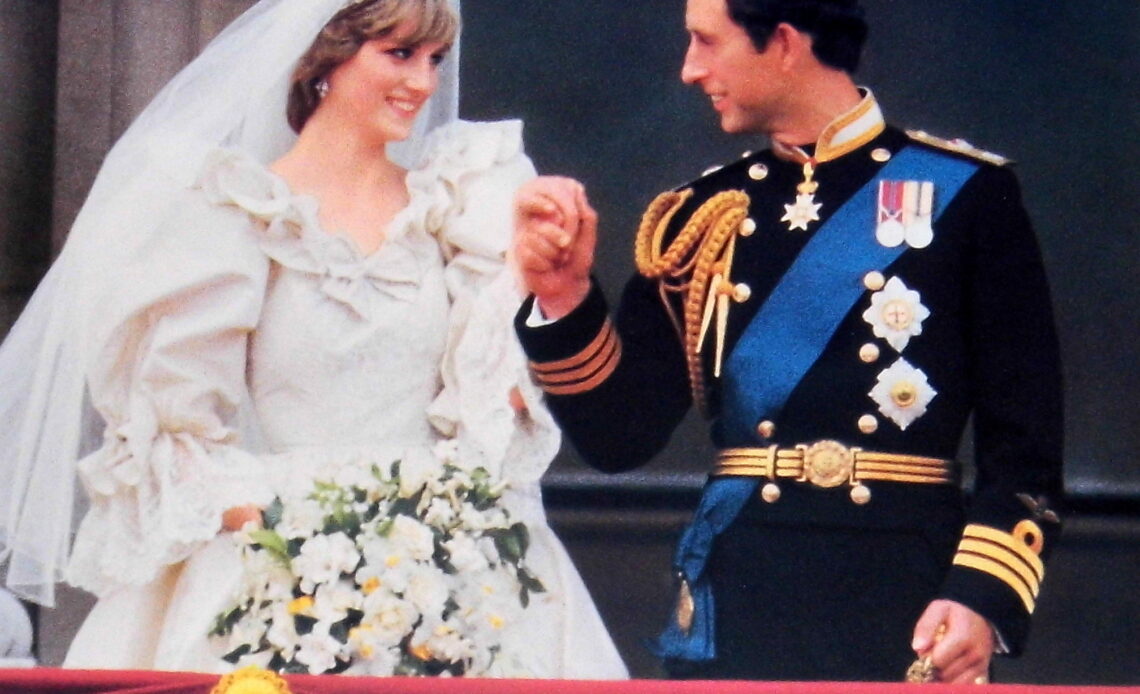
The flowers chosen by Diana, Princess of Wales for her wedding day are among the most memorable of royal bouquets. The tumbling, trailing mix of cream, green and yellow blooms that the bride carried into St. Paul’s Cathedral on July 29th 1981 for her marriage to the Prince of Wales remain among the most recognizable of royal flowers almost four decades after they were first seen.
For a start, there’s no missing this royal wedding bouquet. It was huge. So big, in fact, that Buckingham Palace referenced the size in official communications about the bride’s outfit. With typical understatement, it noted that the bouquet was ‘’well balanced’’ adding ‘’although heavier than most carried nowadays, the distribution should not be too tiresome for the bride’’.
[getty src=”109326934″ width=”399″ height=”594″ tld=”co.uk”]And it certainly was a departure from the wedding norm at the time. Most brides stuck with small, shaped bouquets or pretty posies. That was never really an option for Diana given the scale of her dress and her choice of a big bouquet, often described as Edwardian in style, set a new style of floral fashion at weddings for years to come.
So let’s get down to the petals. The flowers used in Diana’s bouquet were a mix of traditional wedding blooms and nods to her husband’s royal family and her new life. Like many a bride (royal or otherwise) before her, Diana included wedding favourites stephanotis, freesias, gardenias and lily of the valley in her flowers. They were mixed with Odontoglossum orchids, which had featured heavily in the wedding bouquet carried by the Queen in 1947, and a type of golden yellow rose called ‘Earl Mountbatten’ named after Prince Charles’ beloved great uncle, Louis, who had been killed in an IRA bomb attack two years earlier.
The bouquet also included plenty of greenery amongst the bridal blooms. Ivy and Veronica (Hebe) were used to added texture and depth to the flowers as was tradescantia. Like many other royal brides, Diana’s bouquet also included a sprig of myrtle taken from a bush grown by Queen Victoria adding another layer of tradition to this regal bouquet.
[getty src=”73399843″ width=”594″ height=”413″ tld=”co.uk”]Victoria herself loved the language of flowers, that long established code which gives a meaning to different blooms, and the petals in Diana’s bouquet tell a suitably happy story. Those traditional bridal flowers all have love filled meanings. Lily of the valley denotes ‘’a return to happiness’’ while stephanotis symbolizes ‘’happiness in marriage’’. Gardenias are taken to mean ‘’you’re lovely’’ while freesias stand for innocence.
The language of flowers also has romantic meanings for the orchids in Diana’s bouquet. They symbolize love, beauty and strength. Roses traditionally stand for love and happiness although some floral dictionaries differ on the meaning of the yellow version with some opting for it as a sign of friendship and others as a symbol of jealousy.
[getty src=”52118164″ width=”394″ height=”594″ tld=”co.uk”]As you’d expect, the greenery elements all have meanings appropriate for long lasting happiness. Ivy symbolizes marriage and is also a sign of fidelity, as is the Veronica in the bouquet. And it’s no wonder myrtle was so popular with the Victorians for a wedding day – it simply stands for love.
All rather appropriate for a marriage that, at the time, was seen as a fairytale. We know the ending was far from happy but the flowers carried Diana, Princess of Wales fitted perfectly with the air of romance that surrounded her royal wedding.
There is much more on Charles and Diana’s wedding in our book. Royal Weddings: A Collection is available on Amazon as an ebook or paperback.

